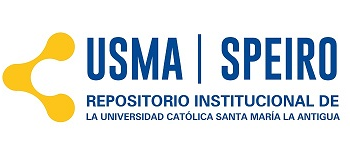Influence of Discursive Strategies on the Reach of MINSA's Instagram Posts about COVID-19
DOI:
https://doi.org/10.37387/ipc.v12i3.393Keywords:
discursive strategies, Instagram posts, textual typology, syntax, healthAbstract
This study analyzes the relationship between discursive strategies in Instagram posts and their reach, measured by "likes". Instagram posts about COVID-19 from the Ministry of Health were examined, using a non-experimental, cross-sectional quantitative approach. The findings indicate that textual typology (exhortative, instructive, argumentative, informative) and syntax (imperative and active sentences) significantly influence the reach of posts. Exhortative posts and imperative and active sentences were the most common and had significantly higher reach. Additionally, a decrease in reach was observed in the months of June and July. The word "mask" was frequently used, reflecting public health recommendations. This study provides valuable understanding of how discursive strategies can impact the reach of social media posts, which is useful for health organizations and other actors seeking to maximize the impact of their messages.
Downloads
References
Biber, D. (1988). Variation across speech and writing. Cambridge University Press.
BinBoucher, J., Kim, S. Y., Jessiman-Perreault, G., Edwards, J., Smith, H., Frenette, N., Badami, A., & Scott, L. A. (2023). HPV vaccine narratives on Twitter during the COVID-19 pandemic: a social network, thematic, and sentiment analysis. BMC Public Health.
Brown, P., & Levinson, S. C. (1987). Politeness: Some universals in language usage (Vol. 4). Cambridge University Press.
Chan, K. L., & Zary, N. (2021). Applications and Challenges of Implementing Artificial Intelligence in Medical Education: Integrative Review. Journal of Medical Internet Research, 23(6), e25892.
Goffman, E. (1967). Interaction ritual: Essays on face-to-face behavior. Pantheon.
Li, D., & Chow, U. T. (2023). Discursive strategies in the branding of Fortune Global 500 Chinese manufacturing companies. Palgrave Communications.
Li, X., Liu, Q., & Chen, J. (2020). How Does the Chinese Government Use Social Media to Respond to Public Health Crises? An Analysis of the Chinese Government's Weibo Communication in the Early Stages of COVID-19. Journal of Medical Internet Research, 22(8), e21360.
Pang, B., & Lee, L. (2008). Opinion mining and sentiment analysis. Foundations and Trends® in Information Retrieval, 2(1–2), 1-135.
Van Dijk, T. A. (2006). Discourse, context and cognition. Discourse Studies, 8(1), 159-177.
Xie, T., Ge, Y., Xu, Q., & Chen, S. (2023). Public Awareness and Sentiment Analysis of COVID-Related Discussions Using BERT-Based Infoveillance. AI.
Published
How to Cite
Issue
Section
License
Copyright (c) 2024 info:eu-repo/semantics/openAccess

This work is licensed under a Creative Commons Attribution-NonCommercial-ShareAlike 4.0 International License.
1. The Publications Service of the Universidad Católica Santa María La Antigua (the publisher) preserves the patrimonial rights (copyright) of the published works, and favors and allows their reuse.
2. The magazine (and its contents) use Creative Commons licenses, specifically the CC BY NC SA type, where: "the beneficiary of the license has the right to copy, distribute, display and represent the work and make derivative works provided you acknowledge and cite the work in the manner specified by the author or licensor." Abstract: https://creativecommons.org/licenses/by-nc-sa/4.0/ license: https://creativecommons.org/licenses/by-nc-sa/4.0/legalcode
3. They can be copied, used, disseminated, transmitted and exhibited publicly, provided that: i) the authorship and the original source of its publication (magazine, publisher and URL, DOI of the work) are cited; ii) are not used for commercial purposes.
4. Conditions of self-archiving. Authors are encouraged to electronically disseminate the post-print versions (version evaluated and accepted for publication), as it favors their circulation and dissemination, increases their citation and reach among the academic community.











